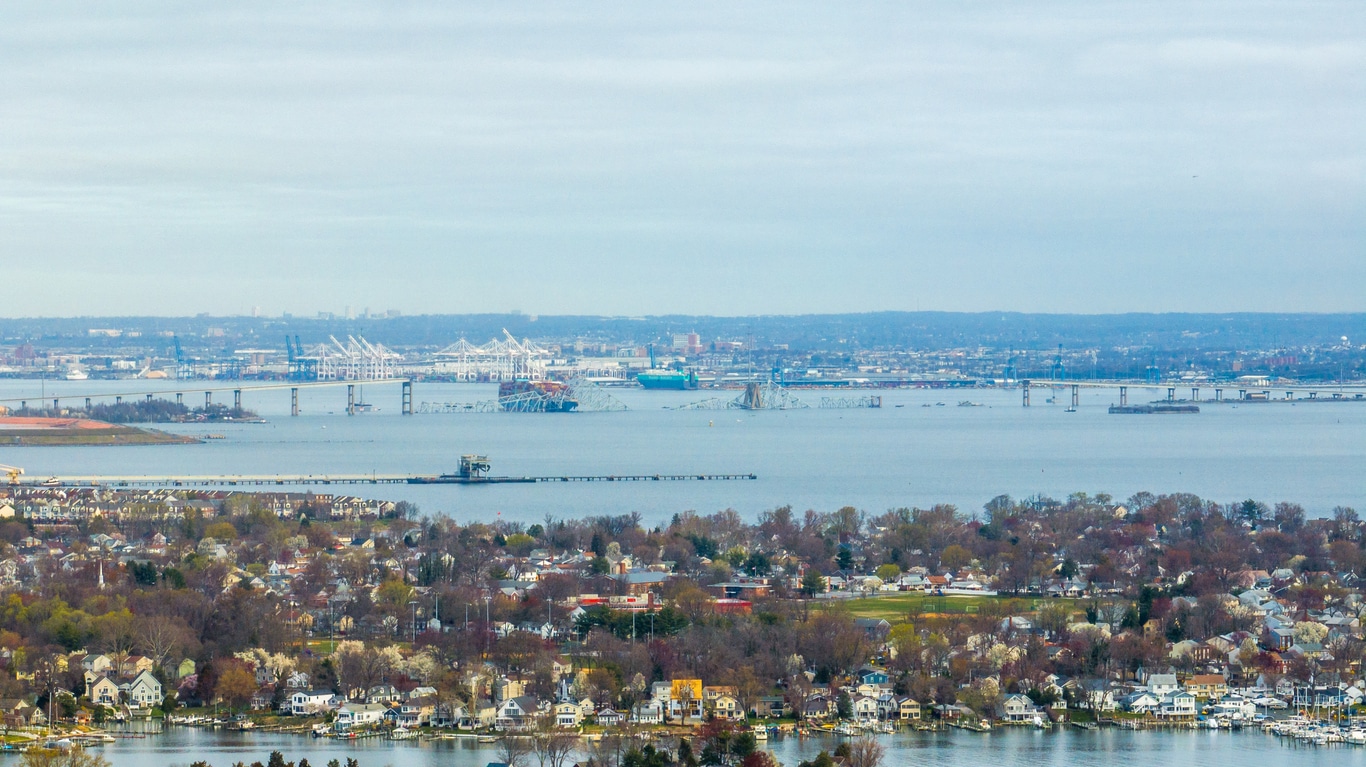The U.S. Department of Justice has filed a lawsuit against the owner and manager of the cargo ship responsible for the deadly collapse of the Francis Scott Key Bridge in Baltimore, shedding light on serious safety violations that may have far-reaching implications for the insurance industry. The lawsuit, filed in Maryland, seeks to recover more than $100 million in costs the government incurred to clear underwater debris and reopen the port after the March disaster.
The Baltimore bridge collapse, which killed six construction workers, resulted from a series of mechanical and electrical failures aboard the Dali, a massive cargo ship owned by Singapore-based Grace Ocean Private Ltd. and managed by Synergy Marine Group. According to the Justice Department, the companies had recklessly cut corners, sending an “unseaworthy vessel” with known electrical problems on a critical voyage.
Insurance Implications of Negligence and Safety Failures
The allegations of widespread mechanical issues and reckless cost-cutting will likely trigger extensive insurance claims and raise concerns for the insurance industry. With the lawsuit accusing the companies of “grossly negligent decisions,” insurance coverage for liability, marine operations, and infrastructure damage will be thoroughly tested.
For marine insurers, this case is a cautionary tale of the consequences of overlooking safety protocols. The Dali experienced repeated power issues, with investigators identifying loose cables and other failures, which contributed to the vessel’s loss of steering and the subsequent bridge collapse. Insurance providers will need to examine whether their coverage accounts for such mechanical failures and whether clients maintain adequate safety standards to mitigate risks.
Infrastructure and Liability Insurance Considerations
The collapse of the Francis Scott Key Bridge and the extensive debris removal that followed point to significant claims under both infrastructure insurance and liability policies. The government’s efforts to recover over $100 million spent on reopening the Port of Baltimore highlight the potential financial burden that could fall on insurance companies covering the ship’s owners and operators.
The lawsuit claims the ship’s transformer and electrical systems were “jury-rigged,” and that critical safety features were disabled or ignored. These findings are likely to influence how insurers structure their liability policies, particularly when infrastructure damage is involved. The catastrophic failure of the Dali also raises important questions for insurers about how much liability vessel operators should bear when public infrastructure is damaged.
Workers’ Compensation and Employer Liability
Six men working on the bridge at the time of the collapse tragically lost their lives, which opens the door to workers’ compensation claims and lawsuits from the victims’ families. Brawner Builders, which employed the workers, has already filed claims for damages due to the loss of its employees and construction equipment.
Employer liability insurance for Brawner Builders and any third-party contractors may also be impacted as the case proceeds, depending on whether additional parties are found responsible for the unsafe working conditions that led to the fatalities.
Legal Battles and Insurance Claims Over Baltimore Bridge
In an effort to limit their liability, Grace Ocean and Synergy Marine filed court petitions shortly after the collapse, but the Justice Department is contesting their attempt to reduce legal exposure. As one of the most expensive marine casualty cases in history, this legal battle could set new precedents for how insurance policies handle large-scale marine accidents and third-party infrastructure damage.
If Grace Ocean and Synergy Marine are found liable for the full costs, marine insurance underwriters will likely face significant payouts. The case will also influence how future maritime liability policies are structured, particularly for companies operating in high-risk areas near public infrastructure.
Industry-Wide Repercussions
The Justice Department’s lawsuit against the ship’s owner and manager underscores the critical need for proper maintenance, safety protocols, and accountability in the marine industry. As the insurance sector braces for the possible financial fallout, insurers may revisit how they assess and price risk for clients operating vessels in sensitive waterways.
Ultimately, the Baltimore bridge collapse serves as a stark reminder of the importance of comprehensive safety measures, not just for preventing loss of life but for safeguarding against the financial and legal risks that follow catastrophic events.













